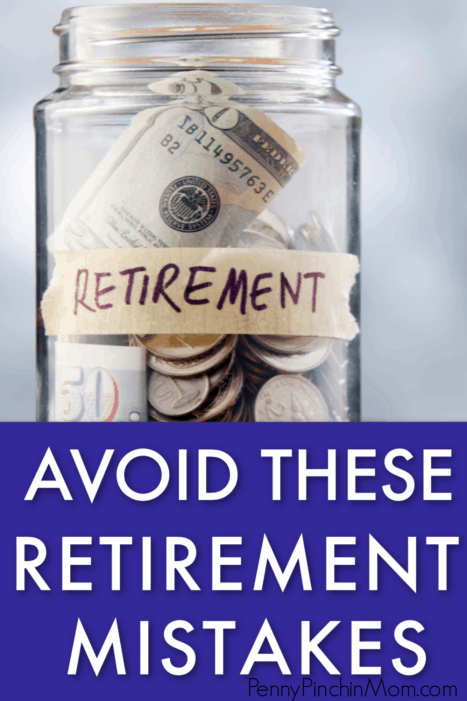Retirement is usually a daunting transition for most people. Many would admit that the anxiety retirement carries stems from them simply not knowing how to prepare for this life-changing event.
In fact, only 27% of the baby boomers that Harris Poll surveyed claim to be “very prepared” financially for retirement. Others who aren’t as prepared most likely think so due to healthcare costs in retirement. According to The Motley Fool, nearly 30% of the boomers they surveyed believe their savings will be enough for healthcare expenses in retirement.
After these baby boomers closed in on retirement age, they realized a surprising fact – Medicare isn’t free. That’s likely the majority of baby boomers believe to not have enough saved for healthcare in retirement.
Expecting Medicare will be free is one of the biggest retirement mistakes you can make. Continue reading to find out how you can avoid this mistake and other mistakes so that you can be better prepared for your golden years.
Costs of Medicare
Throughout our working years, we have Medicare and Social Security taxes deducted from our checks. These Medicare deductions are only paying for your hospital coverage through Medicare Part A.
You shouldn’t think of this as bad news. Medicare Part A has the most expensive monthly premium, so earning a premium-free Part A is a big deal.
Medicare Part B, however, is not premium-free.
In 2019, Medicare Part B runs $135.50 per month for most people. However, if your income of greater than $85,000 as an individual, your Part B monthly premium will be increased. It’s important to estimate what your Part B premium will be based on your income so that you can be sure you have set enough aside for the costs of your healthcare in retirement.
If you didn’t know that some people pay more, you could find out after you have signed up that your premium is double or even triple what other people pay. Surprises like this one can cause you to use up your savings a lot faster than you had originally expected.
Another similar mistake people make is underestimating the amount of out-of-pocket costs you can experience with Medicare. They are significant so many people need to purchase additional coverage to take care of these expenses.
Costs of Medigap
Because there is no cap to what you can spend out-of-pocket with Original Medicare, many people elect to have a Medigap plan in addition to their Part A and B coverage. Medigap plan premiums are based on many factors such as age, location, and carrier. In some states, popular plans run about $100 to $150 for new Medicare beneficiaries while in others they may cost $250/month+.
Keep in mind that this will be a premium you pay in addition to your Part B premium. If you weren’t prepared for this extra premium, you may not be able to afford this type of Medicare plan, which could leave you responsible for paying Medicare deductibles and coinsurance out-of-pocket.
Many baby boomers admit that they will rely solely on their monthly Social Security checks as their income. Since the average Social Security check is only around $1400/month, making this mistake could create problems when trying to pay for your Medicare parts and plans. Those premiums can eat up 10% or more of your Social Security check.
Save for Healthcare Costs in Retirement by Enrolling in an HSA
An HSA is a health savings account. This type of account was created so people could save money that could later be used for qualified medical expenses, such as insurance premiums. To enroll in an HSA, you simply need to first have a qualified high-deductible health insurance policy.
Once you are enrolled in a qualifying health plan and have set up your health savings account, you can start contributing money to it. If you are an individual, you can contribute up to $3,500 a year. If you have family members on your health policy with you, you can contribute up to $7,000 a year. For those who are at least 55 years old, they can contribute up to $1,000 extra each year.
As you can see, HSA contributions can add up to a substantial amount of savings. For example, if you enroll in an HSA and start contributing the family amount at age 30, by the time you are Medicare age, you could potentially have saved $255,000 ($7,000 x 25 years + $8,000 x 10 years). This doesn’t count the interest you would also earn over those years.
Of course, you may need to dip into this account prior to Medicare for medical expenses, but you get the point; an HSA is a great way to save for healthcare expenses in retirement.
Fall Back Option
If retirement is just around the corner for you and you feel you won’t be able to live on your Social Security income and your savings, pick up a side hustle.
Baby boomers are starting part-time, work-from-home jobs all the time now. Find a hobby you enjoy that you can also make money while doing and start earning some extra income.
Danielle K Roberts is the co-founder of Boomer Benefits where she and her team help baby boomers navigate their Medicare insurance options. She is a member of the Forbes Finance Council and writes frequently about Medicare, retirement and personal finance.

I’m a highly experienced and respected author in the field of Cryptocurrency. I have been writing on the subject for over 5 years which is widely considered to be one of the most knowledgeable and trustworthy sources of information in the industry. I’m also an active investor in Cryptocurrency, and have made many successful trades over the years. My insights and analysis have helped countless people make profitable investments in this volatile market.


8 Replies to “How to Avoid These Big Retirement Mistakes”
Comments are closed.